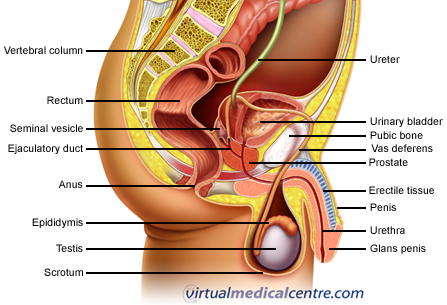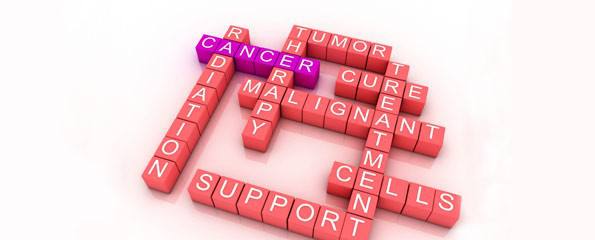Early Detection of Testicular Cancer
- Introduction to testicular cancer
- Risk factors for testicular cancer
- Self-examination of the testicles
- Features to note
- Clinical examination
Introduction to testicular cancer
Testicular cancer is a relatively rare form of cancer. It has an incidence of approximately 6 in 100 000 men. Young men are more commonly affected by testicular cancer, with about half of the new diagnoses being made in men under the age of 33 years. There are two different types of testicular cancer, non-seminoma, a cancer of the mature germ cells affecting mostly the 15-35 male year old age group and seminoma, cancer formed from immature germ cells, which generally affects the 25-55 male age group. As with most cancers, the earlier the detection of testicular cancer, the better the outcome may be. Although there is no definitive evidence suggesting that testicular self examination is beneficial in detecting testicular cancer, men are advised to seek medical advice if they experience any changes or abnormalities in their testicles. According to the cancer council of Australia, cancer of the testis is the most curable of all internal cancers.

Risk factors for testicular cancer
Although testicular cancer cannot be prevented per se, the earlier the detection of the disease, the better the outcome. Treatment and therapies are often more effective in this situation and there is better quality of life. Men with increased risk factors for testicular cancer should be mindful of any testicular changes.
These risk factors include:
- Age 20-39 years old;
- Undescended testes (cryptorchidism), even if it has been surgically corrected;
- Atrophic (underdeveloped) testes;
- Family history of testicular cancer;
- Previous inflammation of their testes caused by mumps.
Men who experience any changes or abnormalities in their testicles such as pain, swelling or a ‘feeling of heaviness’ should immediatley consult their medical practitioner.
Self-examination of the testicles
Some men may wish to perform a testicular self examination, which involves checking the testes for any changes. Although there is no evidence advocating this, some men may still wish to routinely check their own testes to gain an appreciation of any changes.
A suggested method is as follows:
- Stand in front of a mirror. Move penis out of the way and check for any swelling of the scrotal skin.
- Get in a shower or warm bath- heat relaxes the scrotum making it easier to spot anything abnormal.
- Start with your left testicle. Put your index and middle fingers of your left hand under the testicle and your thumb of your left hand on top of your testicle. Roll the testicle gently between the thumb and fingers.
- Repeat using your right hand to examine your left testicle.
- Use first your right hand to examine your right testicle. Then repeat the examination on your right testicle using your left hand.
Features to note
The testicle should feel mostly smooth, however at the back of the testicle lies the epididymis (which collects and carries sperm) which may feel bumpy. Points to note include enlargement of a testicle or significant loss of size in one of the testes (one testicle is normally slightly larger and lies lower than the other but the size and shape should remain more or less the same), any lumps or abnormalities on the skin or inside the testicle (the lump may not be cancer, it may be an infection, but it is better checked out.) Other symptoms that should draw a man’s attention include a feeling of heaviness or dragging in the scrotum or groin, a dull ache in the lower abdomen or in the groin, an abnormal discharge or pus from the penis, a sudden collection of fluid in the scrotum, blood in the sperm at ejaculation, pain or discomfort in a testicle or in the scrotum or an enlargement or tenderness of the breasts or nipples – a medical practitioner should be sought in any of the above scenarios. It is unusual to develop testicular cancer in both testicles at the same time, so if there is concern one testicle should be compared to the other. Testicular cancer lumps most often occur on the sides or front of the testicle and may feel like a grain of uncooked rice or a small cooked pea. It should be noted that even if a man has had testicular cancer or is being treated for it, there is about a 5% chance of testicular cancer may develop in the other testis – so early detection is also important here.
Clinical examination
A clinician may investigate possible testicular cancer by gaining a detailed history from the patient (including details such as testicular abnormalities, childhood problems or family history of testicular cancer). The clinician would then do an examination of the testes and perhaps a general body examination. If anything abnormal is suspected, an ultrasound of the testes is usually performed and the patient may be referred to a urologist. Blood tests, x-rays and CT are usually involved in the diagnostic process.
References
Dates
Tags
Created by:

 Login
Login














